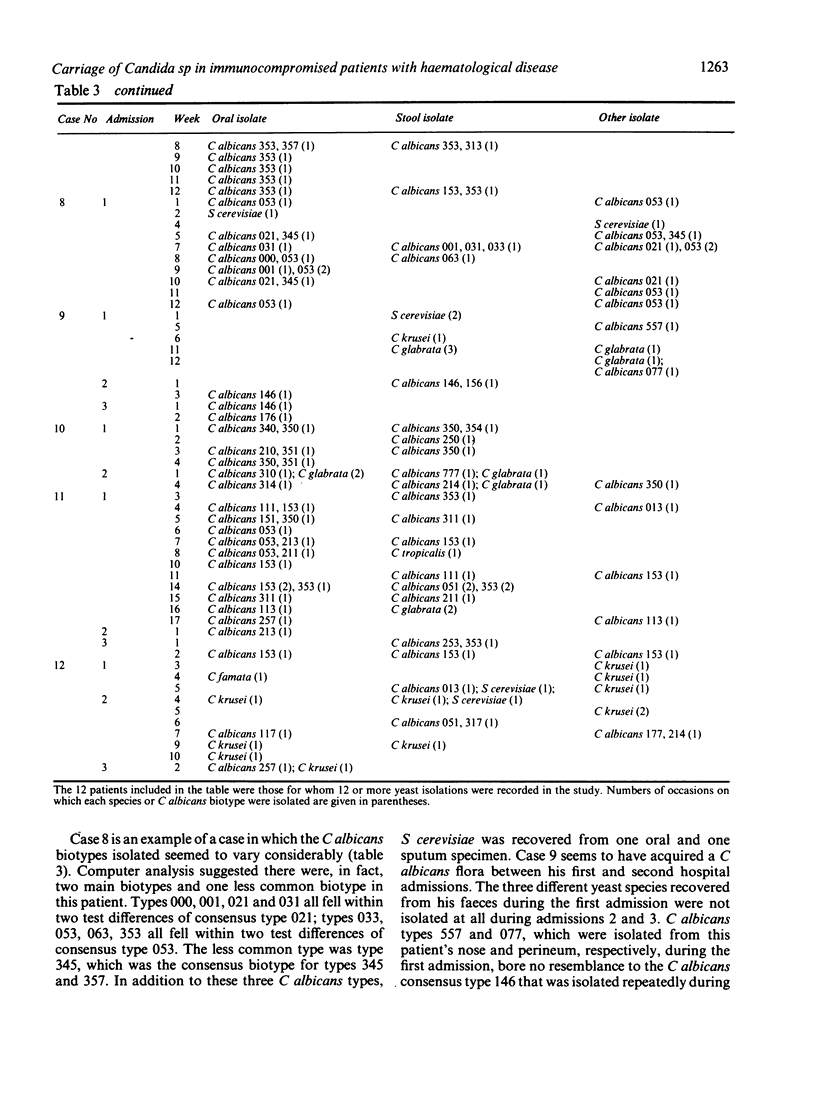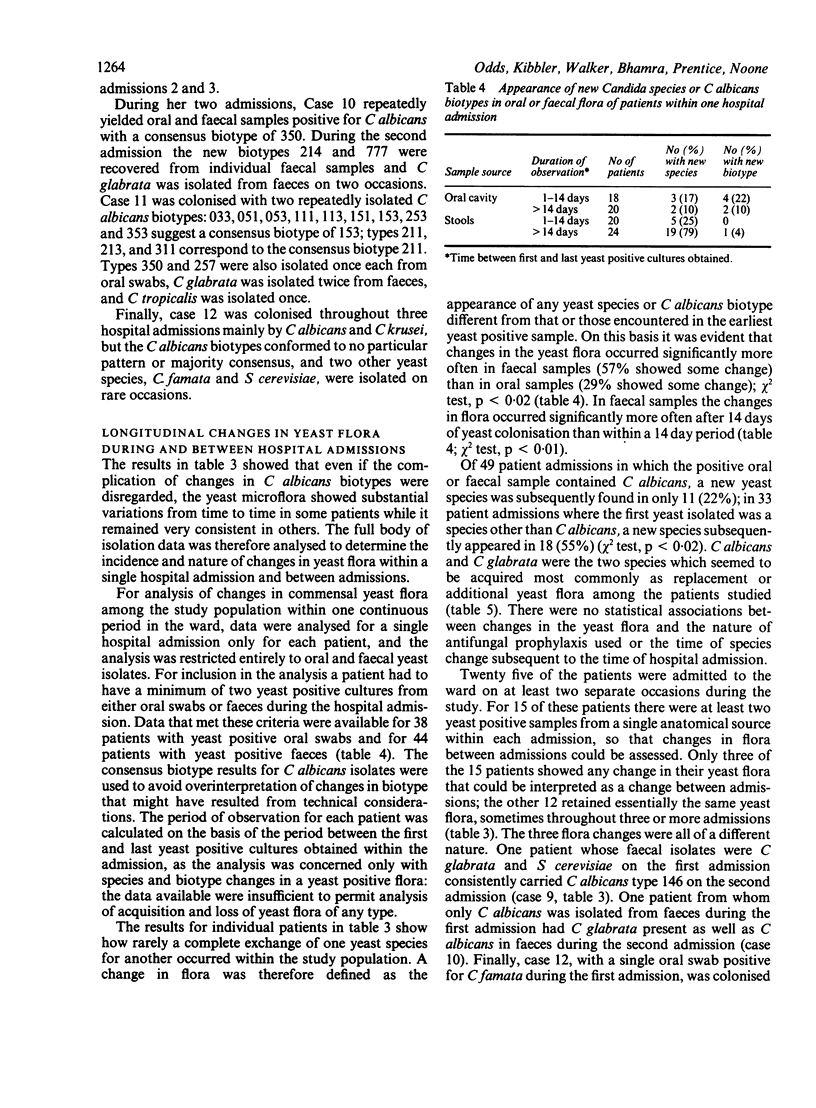Abstract
Six hundred and seventy four yeast isolates obtained from routine microbiological screening of 153 patients with haematological disease were identified and Candida albicans isolates biotyped over nine months to determine longitudinal and cross sectional patterns of yeast colonisation. A yeast microflora persisted in many patients despite the routine prophylactic use of oral antifungal agents. Analysis of the yeast species isolated on a cross sectional basis showed that C albicans accounted for 65% of yeasts isolated from the oral cavity but only 45% of the faecal yeast flora. Longitudinal changes in yeast flora occurred significantly more often in faecal samples than in oral samples and significantly less often in sites colonised with C albicans than in sites colonised with other species. No associations were found between the yeasts isolated and the nature of antifungal prophylaxis used, or the extent of a patient's stay in hospital.
Full text
PDF







Selected References
These references are in PubMed. This may not be the complete list of references from this article.
- Burnie J. P., Odds F. C., Lee W., Webster C., Williams J. D. Outbreak of systemic Candida albicans in intensive care unit caused by cross infection. Br Med J (Clin Res Ed) 1985 Mar 9;290(6470):746–748. doi: 10.1136/bmj.290.6470.746. [DOI] [PMC free article] [PubMed] [Google Scholar]
- Hann I. M., Prentice H. G., Corringham R., Blacklock H. A., Keaney M., Shannon M., Noone P., Gascoigne E., Fox J., Boesen E. Ketoconazole versus nystatin plus amphotericin B for fungal prophylaxis in severely immunocompromised patients. Lancet. 1982 Apr 10;1(8276):826–829. doi: 10.1016/s0140-6736(82)91874-8. [DOI] [PubMed] [Google Scholar]
- Kiehn T. E., Edwards F. F., Armstrong D. The prevalence of yeasts in clinical specimens from cancer patients. Am J Clin Pathol. 1980 Apr;73(4):518–521. doi: 10.1093/ajcp/73.4.518. [DOI] [PubMed] [Google Scholar]
- Land G. A., Vinton E. C., Adcock G. B., Hopkins J. M. Improved auxanographic method for yeast assimilations: a comparison with other approaches. J Clin Microbiol. 1975 Sep;2(3):206–217. doi: 10.1128/jcm.2.3.206-217.1975. [DOI] [PMC free article] [PubMed] [Google Scholar]
- Matthews R., Burnie J. Assessment of DNA fingerprinting for rapid identification of outbreaks of systemic candidiasis. BMJ. 1989 Feb 11;298(6670):354–357. doi: 10.1136/bmj.298.6670.354. [DOI] [PMC free article] [PubMed] [Google Scholar]
- Odds F. C., Abbott A. B. A simple system for the presumptive identification of Candida albicans and differentiation of strains within the species. Sabouraudia. 1980 Dec;18(4):301–317. [PubMed] [Google Scholar]
- Odds F. C., Abbott A. B. Modification and extension of tests for differentiation of Candida species and strains. Sabouraudia. 1983 Mar;21(1):79–81. doi: 10.1080/00362178385380111. [DOI] [PubMed] [Google Scholar]
- Odds F. C., Auger P., Krogh P., Neely A. N., Segal E. Biotyping of Candida albicans: results of an international collaborative survey. J Clin Microbiol. 1989 Jul;27(7):1506–1509. doi: 10.1128/jcm.27.7.1506-1509.1989. [DOI] [PMC free article] [PubMed] [Google Scholar]
- Phelps M., Ayliffe G. A., Babb J. R. An outbreak of candidiasis in a special care baby unit: the use of a resistogram typing method. J Hosp Infect. 1986 Jan;7(1):13–20. doi: 10.1016/0195-6701(86)90021-6. [DOI] [PubMed] [Google Scholar]
- Tomoda T., Nakano Y., Kageyama T. Variations in intestinal candida populations in patients receiving antileukemic therapy. Bull Osaka Med Sch. 1984 Jul;30(1):14–18. [PubMed] [Google Scholar]


